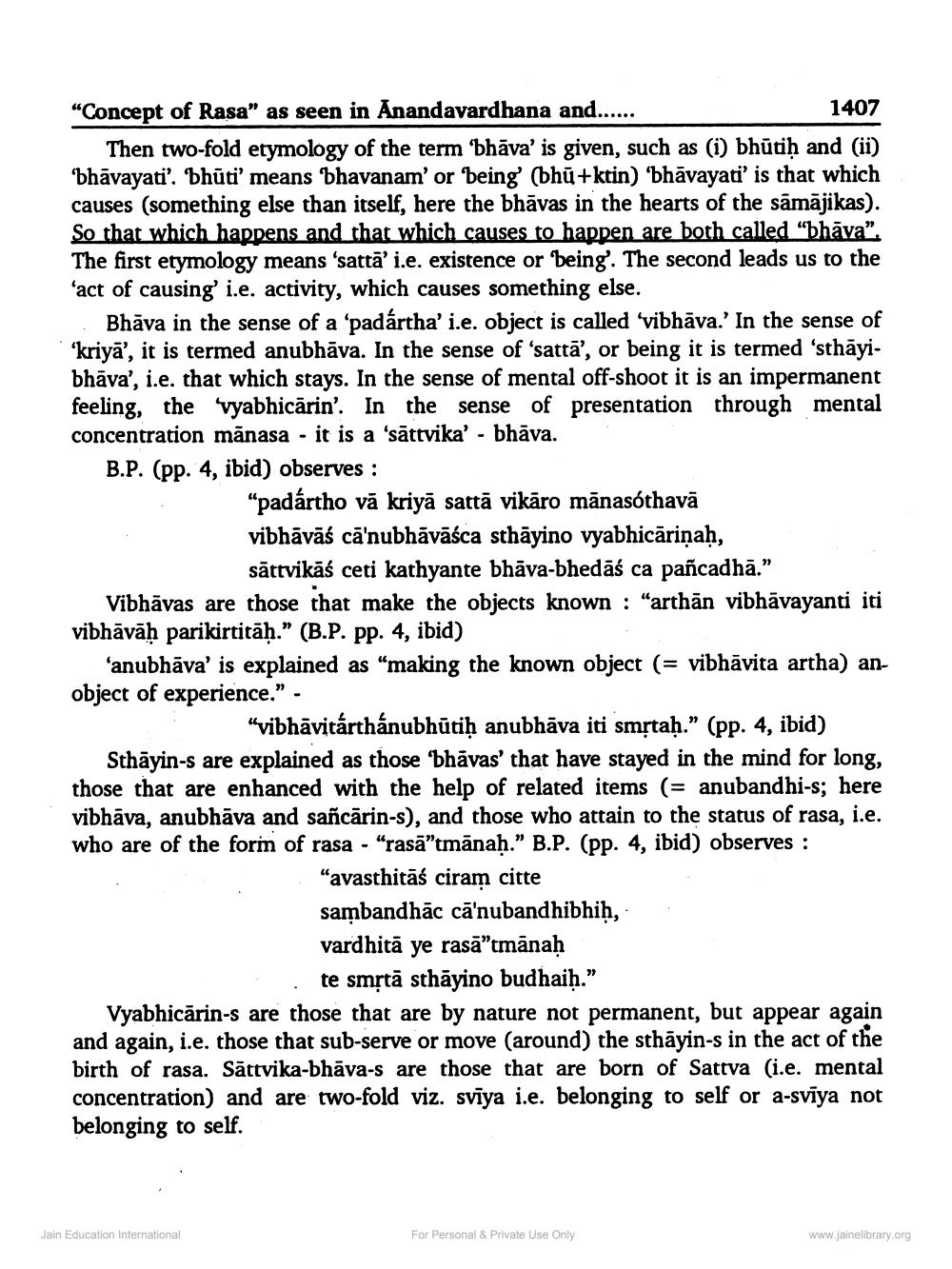________________
"Concept of Rasa" as seen in Anandavardhana and......
1407
Then two-fold etymology of the term 'bhava' is given, such as (i) bhūtiḥ and (ii) 'bhavayati'. 'bhūti' means 'bhavanam' or 'being' (bhu+ktin) 'bhāvayati' is that which causes (something else than itself, here the bhāvas in the hearts of the sāmājikas). So that which happens and that which causes to happen are both called “bhāva”. The first etymology means 'satta' i.e. existence or being'. The second leads us to the 'act of causing' i.e. activity, which causes something else.
Bhāva in the sense of a 'padártha' i.e. object is called 'vibhāva.' In the sense of 'kriya', it is termed anubhava. In the sense of 'satta', or being it is termed 'sthāyibhāva', i.e. that which stays. In the sense of mental off-shoot it is an impermanent feeling, the 'vyabhicarin'. In the sense of presentation through mental concentration manasa it is a 'sättvika' bhāva.
B.P. (pp. 4, ibid) observes :
"padártho vā kriyā sattā vikāro mānasóthavā
vibhāvāś cā'nubhāvāśca sthāyino vyabhicāriṇaḥ,
sättvikāś ceti kathyante bhāva-bhedāś ca pañcadhā.”
Vibhāvas are those that make the objects known: "arthän vibhāvayanti iti vibhāvāḥ parikirtitāḥ." (B.P. pp. 4, ibid)
'anubhava' is explained as "making the known object (= vibhāvita artha) anobject of experience."
"vibhāvitárthanubhūtiḥ anubhāva iti smṛtaḥ." (pp. 4, ibid)
Sthayin-s are explained as those 'bhāvas' that have stayed in the mind for long, those that are enhanced with the help of related items (= anubandhi-s; here vibhāva, anubhāva and sañcarin-s), and those who attain to the status of rasa, i.e. who are of the form of rasa - "rasā❞tmānaḥ." B.P. (pp. 4, ibid) observes:
"avasthitās ciram citte sambandhāc ca'nubandhibhiḥ, vardhita ye rasā❞tmānaḥ
te smṛtā sthāyino budhaiḥ."
Vyabhicārin-s are those that are by nature not permanent, but appear again and again, i.e. those that sub-serve or move (around) the sthayin-s in the act of the birth of rasa. Sättvika-bhāva-s are those that are born of Sattva (i.e. mental concentration) and are two-fold viz. svīya i.e. belonging to self or a-sviya not belonging to self.
Jain Education International
For Personal & Private Use Only
www.jainelibrary.org




